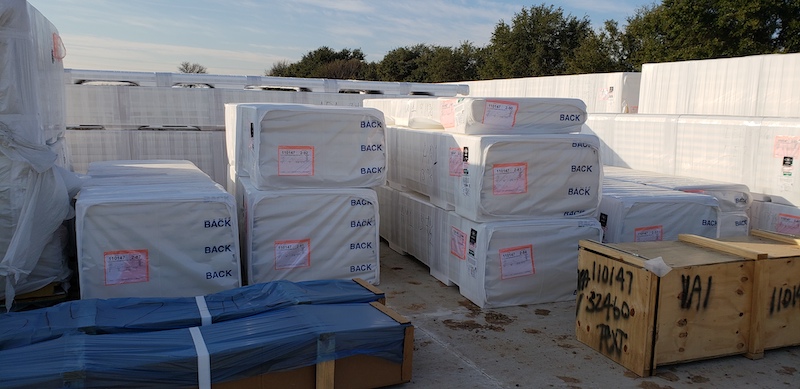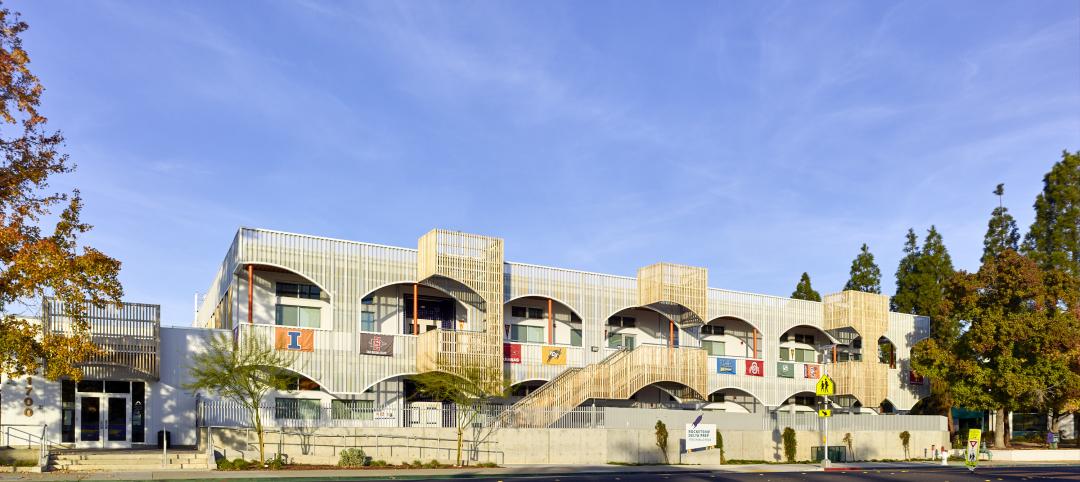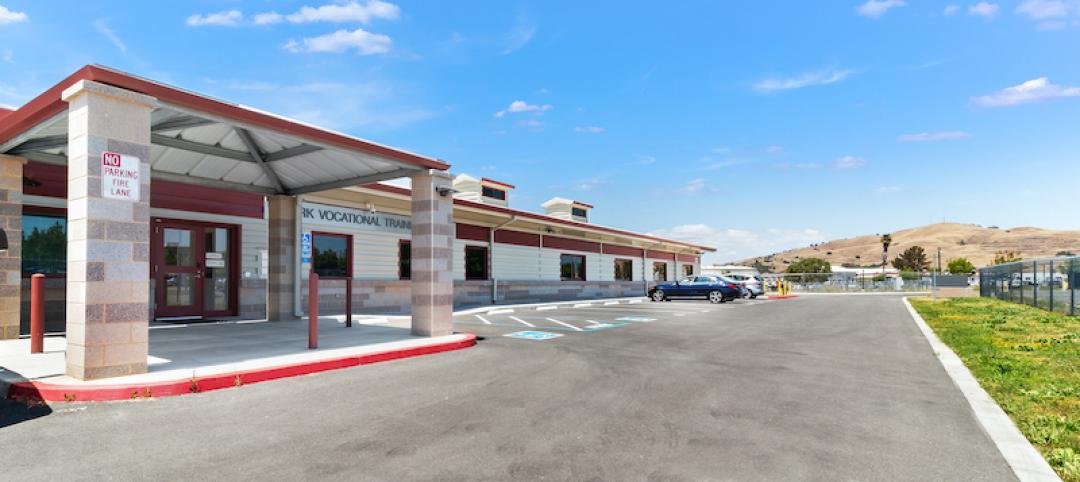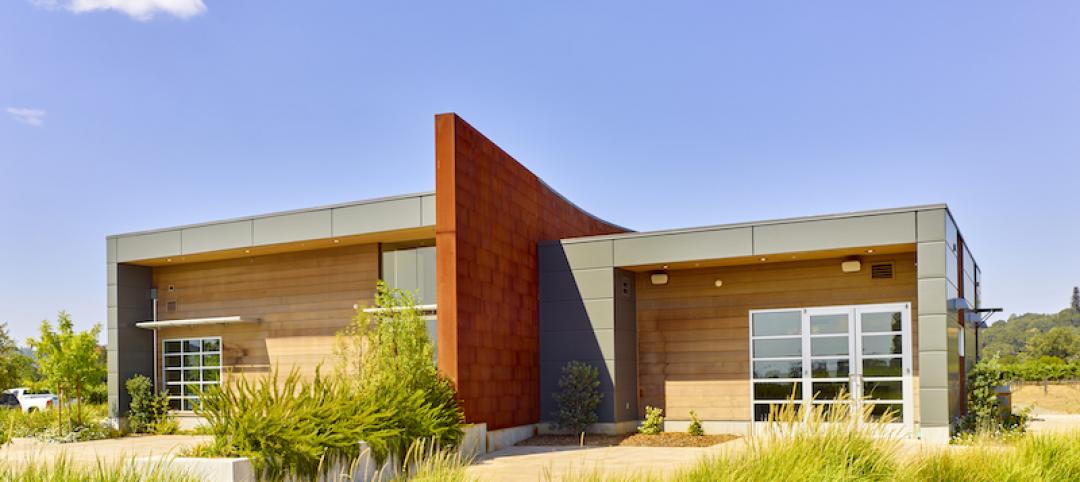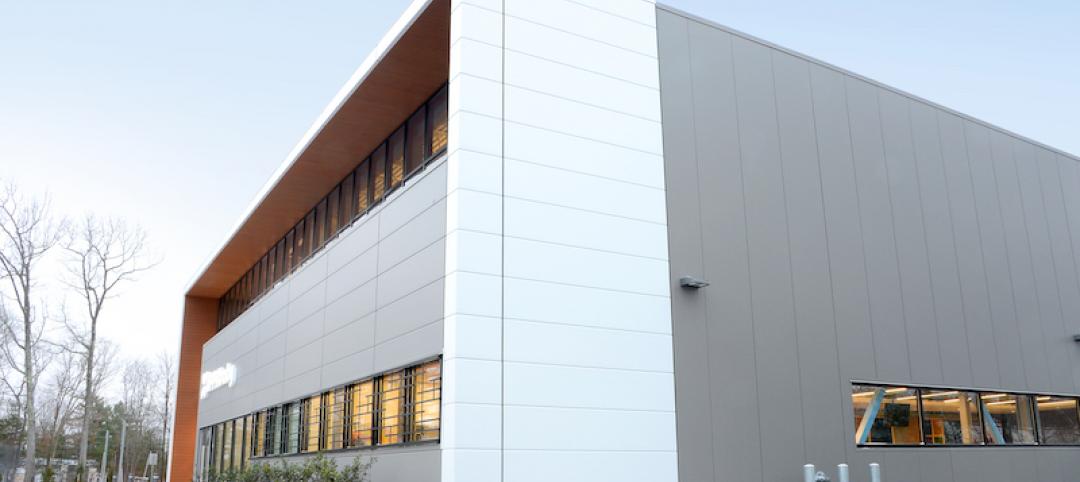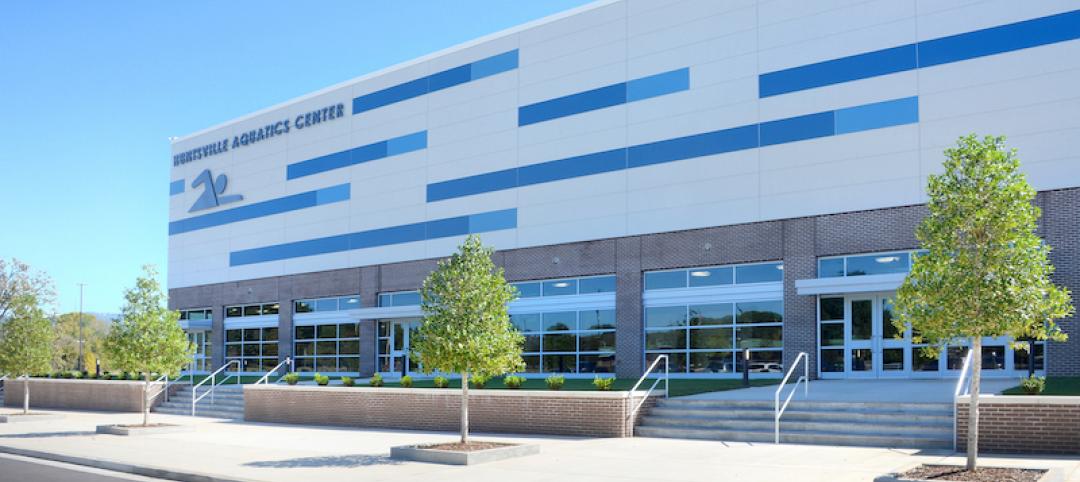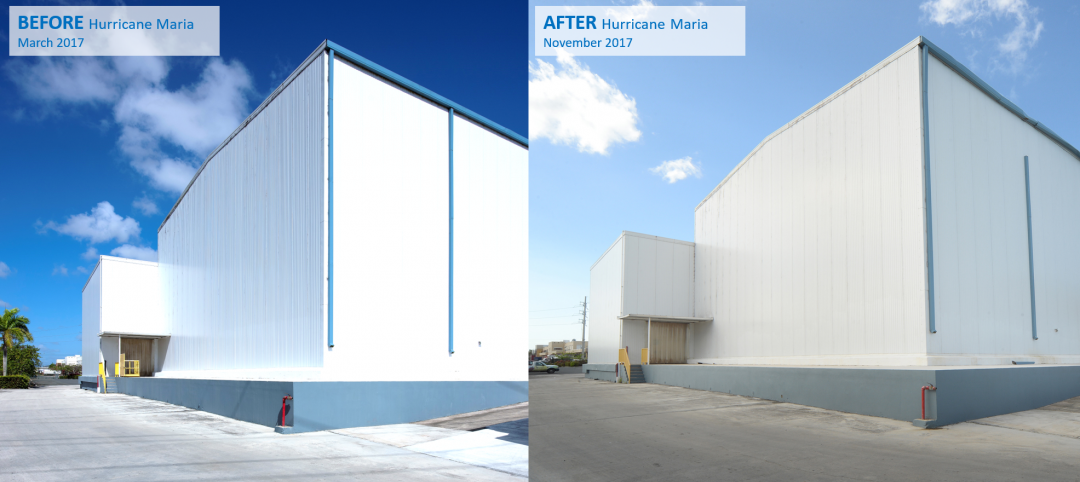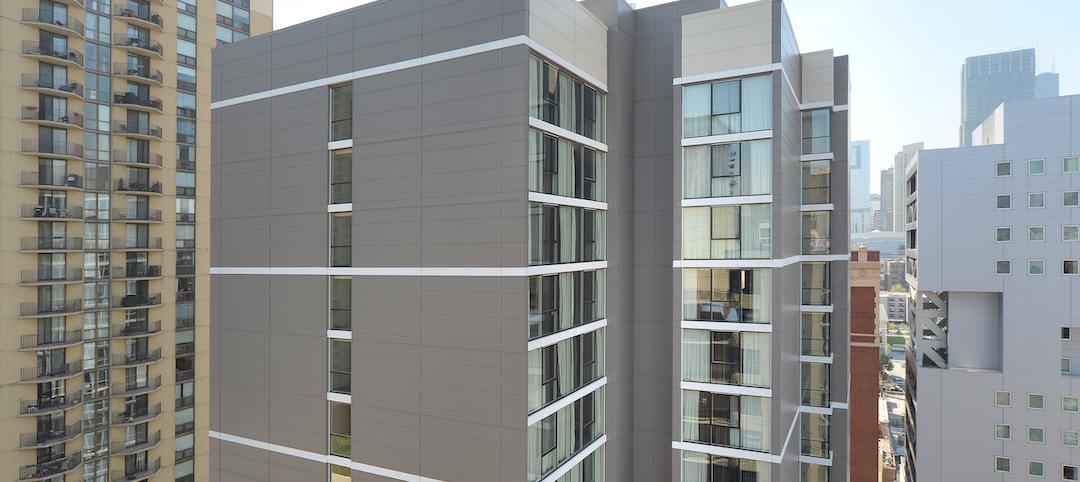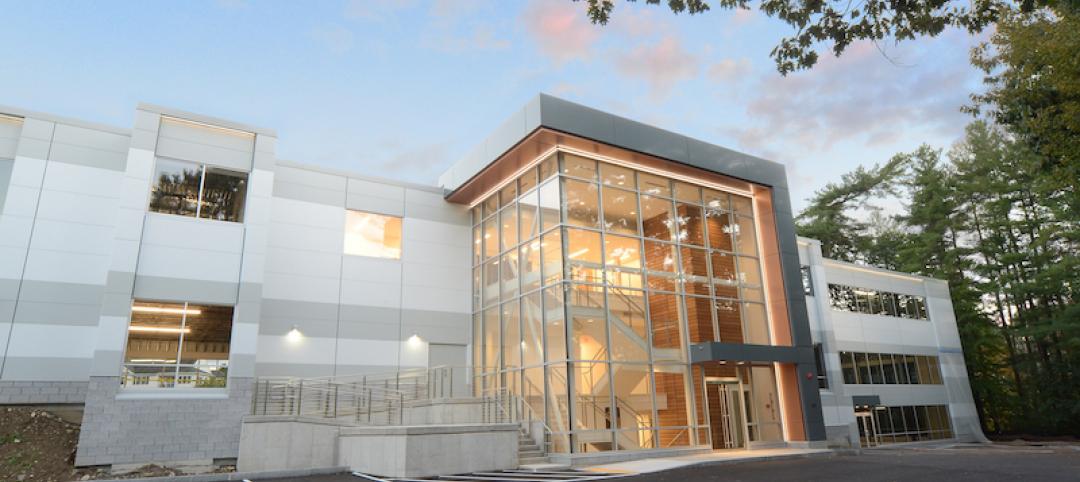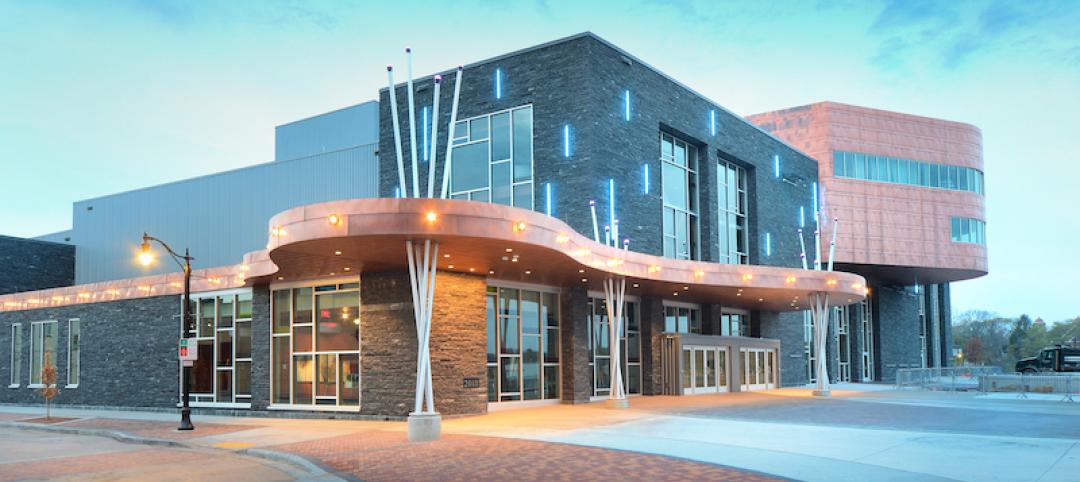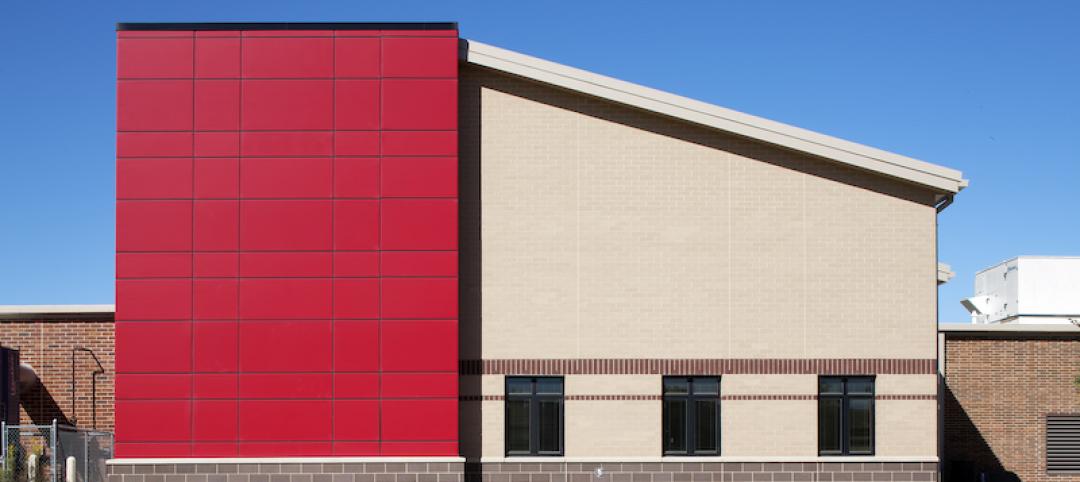Construction has enough odds and ends to keep in mind without having to deal with dings or punctures to panels before they’ve even been installed. At Melt-Span, we want to make the process as simple as possible, so through the years we’ve amassed a list of the most common issues clients face when storing insulated metal panels (IMPs) on job sites.
The first step in making sure that panels go up pristine is to plan the delivery so that it coincides with the date of installation. The less time panels spend sitting around the site, the less likely they can be damaged; but sometimes, that just isn’t possible. “Ideally, you’d want the material [to arrive] no more than two weeks before installation,” said Arnold Corbin, Metl-Span’s Technical Sales Manager. “Most problems can be avoided with a little preparation and training.”
Corbin admits, though, that timing can be difficult to plan. Particularly when the timeline needs to be established well before the drop-off date. No one wants a project to be pushed back because the panels haven’t arrived, so if the option is between early arrival to the site or late, early is always the better bet.
But even if the IMPs arrive on-time, plenty can go wrong. “The main things we’re primarily worried about is physical damage to the panels when stored on the site or during unloading,” said Corbin.
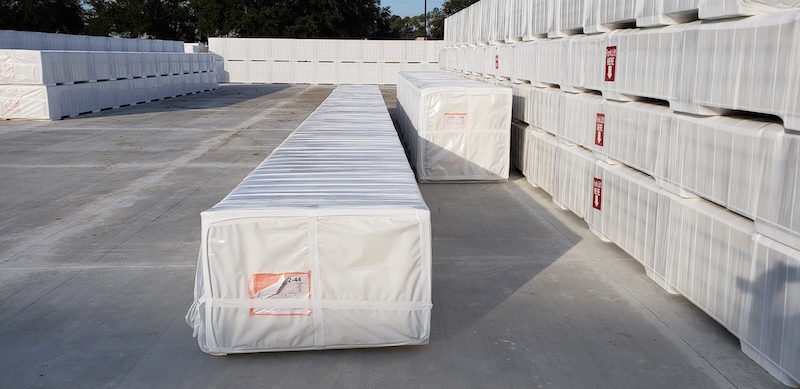
Plan a Storage Site
Whether panels will be sitting on-site for a few hours or a few weeks, there are places that will be better or worse to store bundles.
When planning a space for the bundles to be stored, Corbin suggests keeping a few details in mind: “You want to make sure you store the bundles on a hard surface, making sure you’re not setting it down on an uneven, poorly graded surface.” Unsteady surfaces can cause the bundles to tumble or put too much pressure on one specific spot.
Hard, steady surfaces don’t need to be flush, however, for locations that will potentially be damp or see rainfall while the bundles are onsite. Keeping bundles at an angle can help drain away any water they may come in contact with.
“You don’t want the panels potentially sitting in water,” explained Corbin. “You want to make sure you have small slits in the bottom of the bundles [the packaging] to allow any moisture or condensation that may develop inside the bundles or enter in-transit to exit.”
Lastly, the storage site should be away from other trades working on the site.
“Other trades on site may not understand that these bundles are somewhat fragile,” said Corbin. Despite being metal panels in transportation boxes, IMPs can easily be dinged up or destroyed by untrained persons. Particularly because other trades may be working when you or the contractor are off-site, keeping bundles out of the way of outside teams will lessen the chance of something going wrong.
Unloading Bundles On-Site
Another aspect with a high potential for bundle damage ,that Corbin has seen, involves improper unloading by untrained crews. While Metl-Span offers installation certification courses, the entire team--regardless of position or training--should be made aware of the proper unloading techniques.
Unloading and storing areas should be clear and marked off prior to delivery. Ideally, you’ll want to store the panels where they’re unloaded, preferably in an area where they can stay untouched for as long as necessary. Corbin points out that the more bundles are touched and moved, the more chances exist that they can be damaged. Minimizing handling can decrease the potential for something to go wrong.
Metl-Span bundle weights have a maximum weight of 5,000 lbs, but the exact amount can be found on the bill of lading. Equipment should be checked for proper reach and weight capacity before unloading begins.
If using a forklift, padding the masts can ensure panels aren’t harmed during unloading, and double-check whether one or two forklifts will be needed for the length of the panel.
Other Storage Considerations
There are two more potential ways in which IMPs can be damaged whether or not anyone is on the site. Once bundles are unloaded and stored in a safesecure place: wind and the sun.
“While heavy, bundles are not meant to be stacked more than two high,” said Corbin. “If you get more than three bundles high, high winds can actually push a bundle over. That could potentially not only damage the panels, but it could be a safety issue also.” Even if the bundles seem shielded from potential gusts, it’s better to be safe than sorry.
Lastly, bundles should be protected from direct sunlight. “We recommend covering the bundles with a loose tarp to minimize the amount of UV exposure,” explained Corbin.
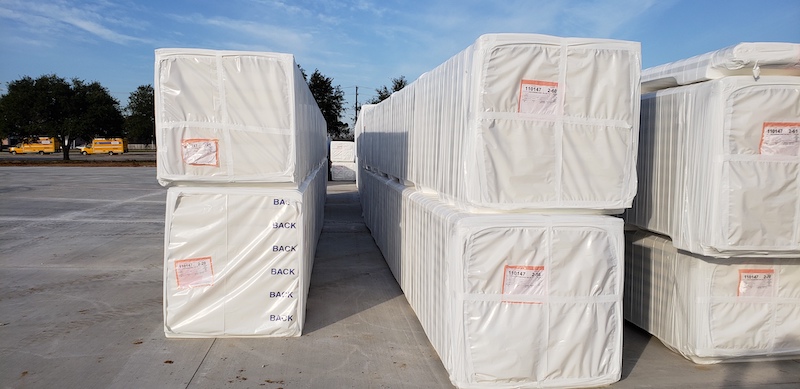
Protect Your Product
Even with the most stringent planning and careful storage, things can still go wrong. Corbin suggests that bundles be photographed at the end of every day. “I get phone calls maybe every other week, if not more often than that, where a forklift was driven into the side of a panel or another trades was careless,” Corbin stated. “One thing we do recommend in our training classes is that when the contractor is done for the day, document it. Take pictures [of the panels and worksite] because often when another trade damages your materials, in a lot of cases they aren’t saying ‘I damaged your wall panels and I’ll pay for it.’ Normally it just mysteriously happens, nobody admits to it. So to protect our customer, document it that you left that wall [or materials] undamaged. That way, you’re putting the potential cost of doing remediation repairs back on the general contractor.”
Construction is enough work without adding damaged IMPs to your to-do list. By following these simple steps, the project can avoid potential problems.
Want more tips for your specific project? Contact a Metl-Span representative.
More from Author
Metl-Span | Nov 5, 2020
Metl-Span Delivers Lesson in Energy Efficiency at California Charter School
How do you construct a net-zero energy, state-of-the-art charter school that also reflects the area’s heritage? Designers for Rocketship Delta Prep School in Antioch, California, went to the head of the class by tapping into the energy efficiency and versatility of Metl-Span’s insulated metal panels.
Metl-Span | Aug 6, 2020
California instructional facility locks down Metl-Span solution for performance, efficiency
Designers charged with envisioning a new educational facility for the incarcerated turned to Metl-Span’s HPCI Barrier Wall Panels for the exterior walls. The result: A LEED-certified, award-winning building.
Metl-Span | Dec 4, 2019
Insulated metal panels offer desired economic aesthetics for winery, hospitality center
Zialena Winery sits on a 120-acre property and dates back to the early 1900s when Giuseppe Mazzoni immigrated from Italy to become a grape farmer and winemaker.
Metl-Span | Nov 13, 2019
All metal panels are not created equal
Understanding the contrast between single-skin and insulated metal panels can make all the difference in building performance.
Metl-Span | Oct 9, 2019
Benefits of specifying insulated metal panels
Metl-Span's IMPs consistently pass or exceed code requirements involving air, water, vapor and thermal performance.
Metl-Span | Aug 30, 2019
Multi-Story Design Considerations When Using Horizontal Insulated Metal Panels
Horizontally installed IMPs require a healthy amount of coordination with the project’s design team.
Metl-Span | Aug 20, 2019
Massachusetts office building goes from retro to retrofit
Metl-Span® Insulated Metal Panels transform 54 West Middlesex Turnpike.
Metl-Span | Jul 31, 2019
Profile depth of Metl-Span’s Insul-Rib panels provides ‘shape and shadow’
The Pablo Center at the Confluence in Eau Claire, Wis., was constructed to fit into its site where the Eau Claire and Chippewa rivers meet.
Metl-Span | May 24, 2019
Structural Insulated Panels and Foamed in Place Insulated Panels
We discuss the characteristics of structural insulated panels and insulated metal panels, then layout the best use of each.

